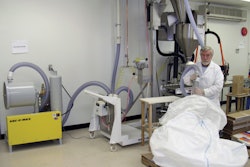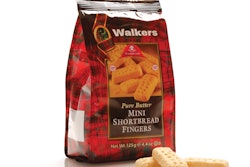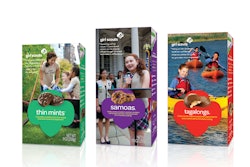Of all the factors shaping packaging today, cost is top of mind. But 10 years from now, say packaging professionals, cost will not be as dominant a force in shaping the packaging scene.
This is perhaps the key takeaway from an exclusive reader survey developed jointly by Packaging World and DuPont Packaging and Industrial Polymers that was conducted in August . As shown in Figure 1, 61% of respondents in North America (NA) say that today, the cost of packaging has more impact on them than any other trend or factor out there. But only 41% of those respondents believe that 10 years from now cost will still be the most important factor that packaging has to contend with.
It’s interesting to note that the downward shift of cost as the most important thing in packaging is even more dramatic in Europe, Middle East, Africa (EMEA). Only 26% of those respondents see cost as the key shaping factor in packaging 10 years from now, down from 58% who see it as the key factor today.
At the same time that cost is descending in importance, sustainability is on the rise. While only 32% of respondents in North America see sustainability as having the most impact on packaging today, 48% of those North American respondents think that sustainability will be the most important factor in 2022.
Shanna Moore, global sustainability director at DuPont Packaging & Industrial Polymers, sees the cost and sustainability interplay in the survey results as connected to one of packaging’s primary objectives. “The cost and sustainability shift indicates that the industry is driving to achieve maximum value with minimal impact,” she says.
One survey respondent had this to say about why sustainability will be top of mind in 2022: “Sustainability will be the trend having the most impact in the future because the resources from which packaging materials are drawn are being steadily depleted. Also, with an increase in population the trend will be to make more packs from less material. The government regulation and various international environmental organizations will drive this trend through various laws and regulations. Government may provide incentives or tax breaks based on a company’s carbon footprint.”
Technologies that improve shelf impact didn’t register very high in importance either now or in 2022. Just 25% of respondents in North America see such technologies as important today, and that number only climbs to 27% in 2022. In EMEA, those numbers are 21% today and 29% in 2022.
Strategies being pursued
What about strategies being pursued today and 10 years from now? This, too, was among the questions asked in the survey, and the responses are captured in Figure 2. Optimizing package shape and size and downgauging of packaging materials are both riding pretty high today. But both are expected to have less impact in 2022, probably because both are what might be called low-hanging fruit in the quest for sustainable packaging. In other words, it’s likely that by 2022, all the downgauging that can possibly be done will have been done, and package shapes and sizes will have been optimized, as well.
As for recycling, in both NA and EMEA it looks like it will remain about as important 10 years from now as it is today. This is probably a good thing. It suggests that recycling has more or less established itself as part and parcel of modern-day living. Newer technologies will show more rapid rates of uptake. But recycling will remain pretty much what it is today: a key plank in the sustainable packaging platform.
Some technologies that today are still in their early stages of development are expected to blossom. A good example is the use of biobased or renewable materials. In both NA and EMEA, 57% of respondents expect to see these materials having a sizable impact in 2022, while only 35% in NA and 30% in EMEA feel that such materials are making an impact today. But as this comment from one respondent reminds us, performance issues must be addressed: “Many biopolymers are emerging as options for film. However, not all meet the performance requirements needed for the range of products they are meant to replace.” Developers of biopolymers would do well to heed this sentiment.
Another sector of the packaging scene that appears to be on the upswing is intelligent/“smart” packaging. In both NA and EMEA, only 23% are pursuing this technology today. But in 2022, 57% in NA and 59% in EMEA see intelligent packaging as having an important
impact.
One technology that respondents don’t expect to see making very significant gains is powered/electronic-enabled packaging. This is interesting when you consider that Bemis Co. and Thin Film Electronics just announced the first commercial agreement in printed electronics to create integrated printed systems for high-volume production and multiple markets. They call their project the Intelligent Packaging Platform, about which Bemis CEO Henry Theisen has this to say: “Our agreement with Thin Film represents an investment in a technology that could eventually make printed electronics a component of every package we manufacture.” It would appear our survey respondents aren’t quite so sure.
Another darling of today’s marketing-minded early adapters, interactive/mobile-enabled packaging, also scored relatively low in our survey. In NA, only 28% expect it to have a significant impact on packaging in 2022, up from today’s 9%. In EMEA, the numbers are about the same. Are folks tiring of QR codes already?
A puzzler
The most puzzling responses in the survey came from a question about packaging attributes that are important to consumers (Figure 3). Why did respondents in both NA and EMEA think that consumers would find convenience/ease of use so much less important an attribute in 2022? What about all the baby boomers struggling to open their aspirin bottles? It would seem that they alone will make ease of use a top priority in 2022.
One respondent’s comment on the subject of convenience sheds a little light on the matter, because it reminds us that the very definition of convenience is something of a moving target: “What convenience means continues to evolve. It varies greatly across regions and from market to market with little sign of convergence.” Another respondent’s comment touched on how convenience must coexist with other packaging attributes: “Packaging in 10 years time needs to be the equivalent of today’s mobile technology. It needs to cater to highly mobile people, yet it must simplify the interface between user and seller while also being relatively cheap and environmentally sustainable.” That same theme of coexistence comes through in a comment from one respondent who thinks Holistic Package Design is the most important packaging characteristic of all: “It’s a matter of thinking about how to integrate shelf impact, sustainability, technology, consumer features, and end of life all together.”
A bit surprising is that both NA and EMEA respondents predict that shelf appeal will be a less important packaging attribute to consumers a decade from now than it is today. On the other hand, we do have this opposing viewpoint, which appears to come from the owner of a private label: “Improving technologies that increase shelf impact is the most important factor ongoing because it is what allows us to compete with the large competitors by producing eye-catching packaging that tempts the consumer more than the comfort of a name brand.”
It’s interesting to note that both NA and EMEA respondents see recyclability as a packaging attribute that will grow in importance with consumers over the next 10 years. This isn’t completely consistent with what respondents had to say in Figure 2 about how recyclable materials are affecting their packaging work today. There the prediction was that use of recyclable materials would have about the same impact in 10 years as it has today. But the question in Figure 2 asks about recycling’s impact on packaging professionals. In Figure 3, on the other hand, attributes that are important to consumers are being measured. So it would appear that recyclability is an issue that will resonate more forcefully with consumers than with packaging professionals.
Figure 3 tells us that perceived “greenness” will grow in importance with consumers, but reusability doesn’t seem to be a packaging attribute that consumers will rally around.
As for perceived safety of materials, respondents don’t see it growing in importance to consumers a whole lot. In NA, 32% of respondents see it as most important in 2022, up from 28% who see it that way today. In EMEA, 38% of respondents see it as most important in 2022, up from today’s 31%.
The survey also directed one question squarely at the subject of sustainable packaging in an effort to shed some light on which criteria are valued now and which will be valued in the future (Figure 4). Here again in both NA and EMEA, respondents view cost as highly important today, while indicating that cost will be considerably less important 10 years from now. Similarly, ability to downgauge the package becomes less important in 2022. Life cycle analysis, on the other hand, looks like it will be valued more highly in the future than it is today. In NA, while 24% of respondents said life-cycle footprint of the package was highly valued today, that percentage jumps to 53% in 2022. And in EMEA, the leap is similar: from 20% today to 51% in 2022.
Finally, one survey question aimed at seeing if respondents agreed or disagreed with five general observations of the packaging scene. Among these observations was this one: “Packaging will play a more important role in a product’s success 10 years from now.” A large percentage of both NA (77%) and EMEA (83%) respondents believe this to be true. As for this statement, “Regulations will influence packaging design more 10 years from now,” 82% of both NA and EMEA respondents agreed. Significant majorities in both regions also see plastics continuing to replace metal and glass, and flexible structures continuing to replace rigid packages. Not very many agreed with the statement that “Recycling concerns hinder my use of packaging structures using more than one type of material.”
One last note worth making is that the survey also included this question: “What technologies or strategies do you think will be needed to ensure food safety and security in the future?” Better barrier materials, more aseptics, the use of antimicrobials, high-pressure sterilization, electron-beam sterilization, better tamper-evidence indicators, broader use of time/temperature indicators—these and many other technology fixes were mentioned by respondents. But most who answered this question were more inclined to see a comprehensive strategy as the solution to food safety than any one technology, and that strategy is all about better integrating the value chain. Here are a few of the verbatim comments that touched on this theme:
•
Better traceability throughout the supply chain
•
HACCP throughout the supply chain
•
More global alignment of procedures and rules
•
More transparency and information exchange are needed within the chain to understand the processes and materials used
•
Better cooperation between producers, users, and the politicians who decide on rules and law
All of which leads DuPont’s Dale Outhous, global market and product director and a participant in developing the survey, to this conclusion: “A key takeaway from this survey is the driving need to work throughout the value chain to develop cost-effective solutions that holistically address multiple needs.”



























